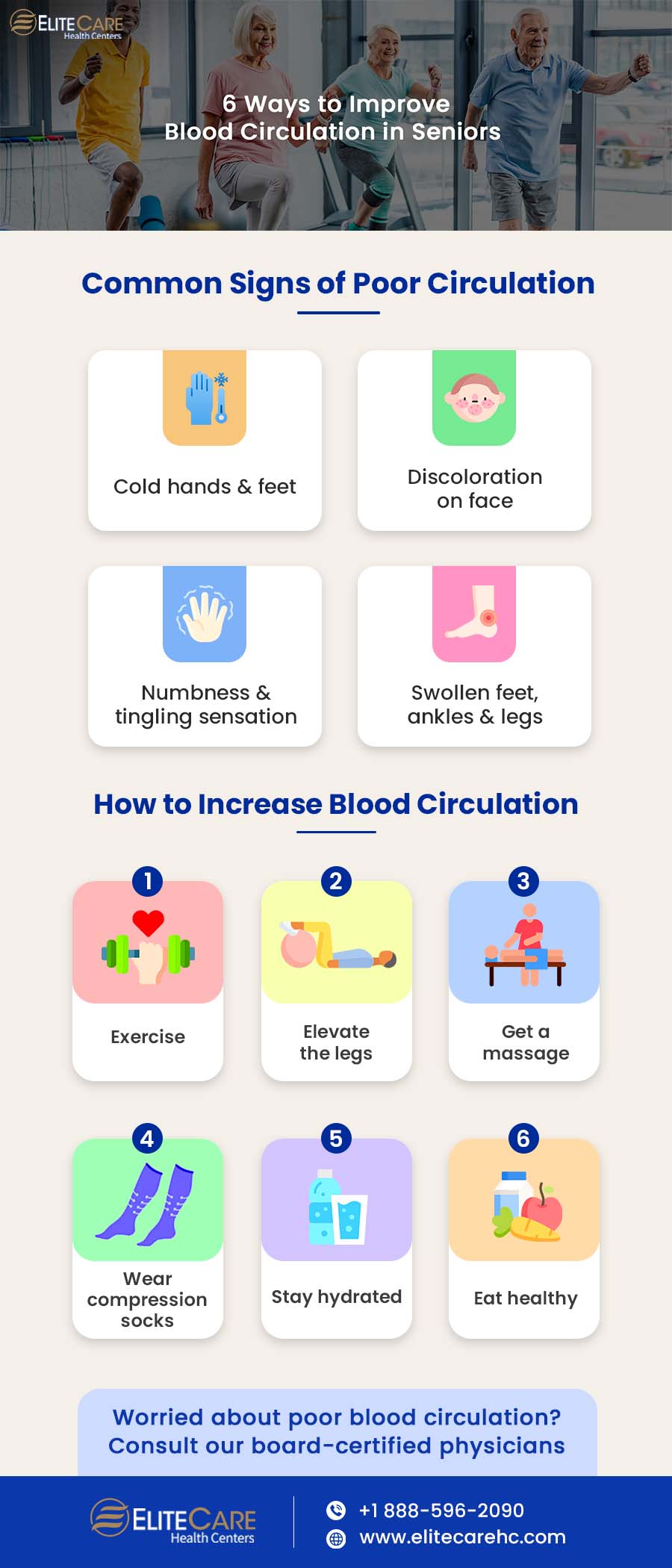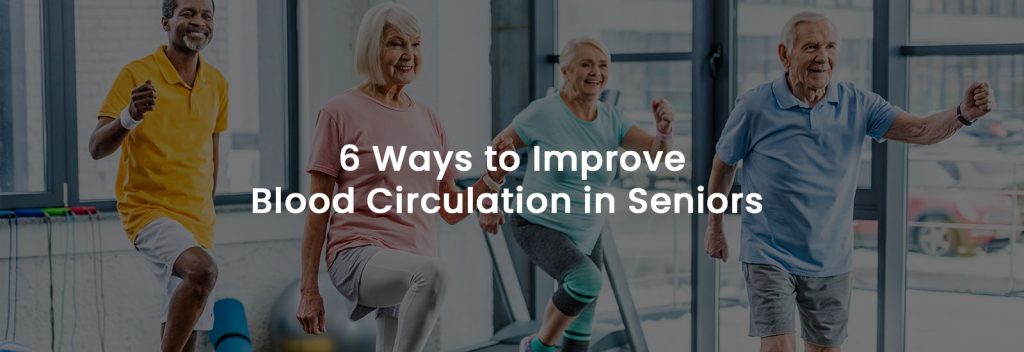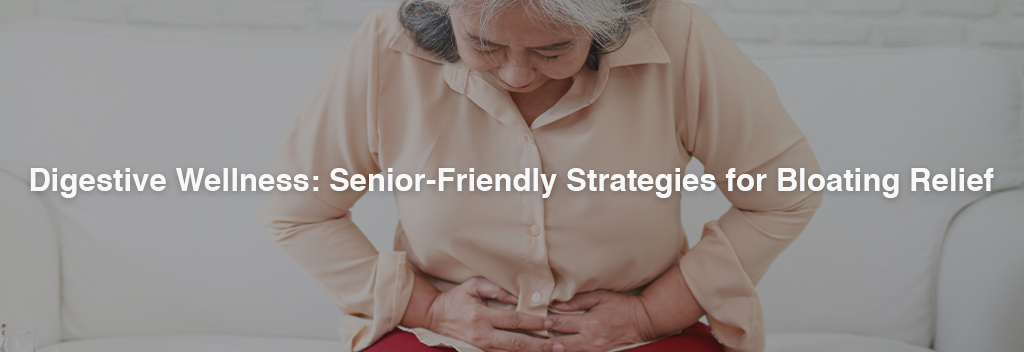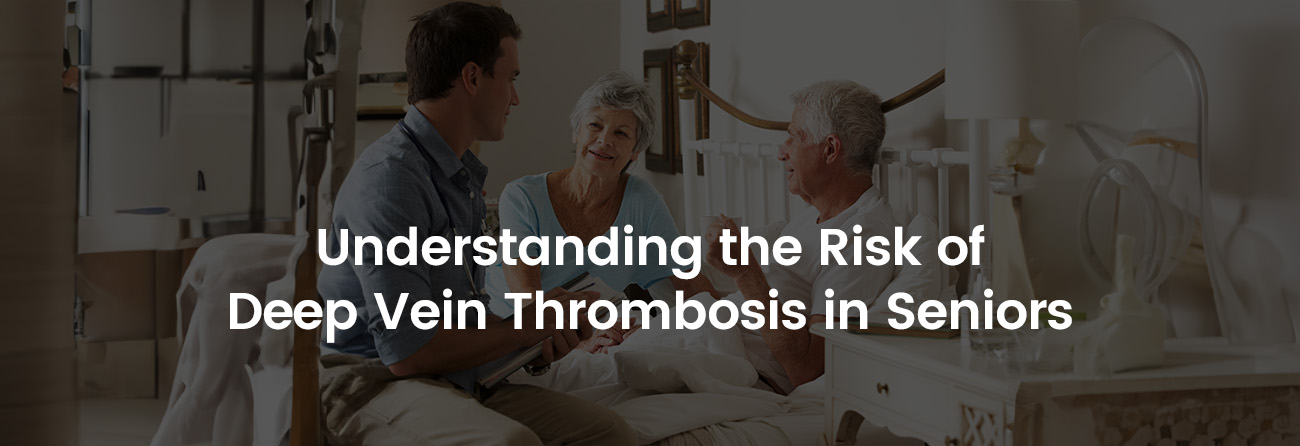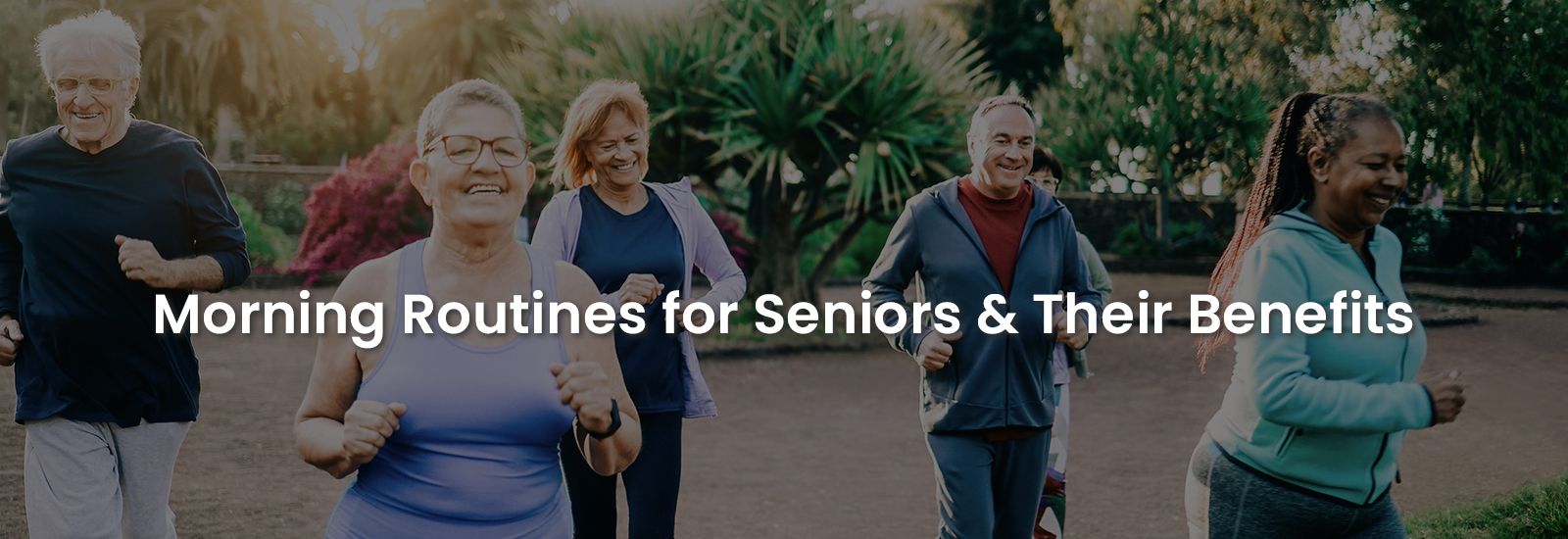
Good blood circulation is an essential part of healthy aging for seniors. Proper blood circulation provides the cells with nutrients and removes waste products from the body. It ensures that all major organs and tissues are functioning properly, helping the elderly lead an active and healthy life.
Poor circulation can impair the body’s ability to heal itself, making it more difficult to fight infections or heal wounds. It can have several health consequences, including fatigue, skin issues, joint pain, etc. In addition, it can also lead to a higher risk of developing severe conditions such as stroke, heart attack, and deep vein thrombosis (DVT). For seniors, it is also crucial to have good circulation to reduce the effect of aging on their cognitive functions, such as memory and concentration.
What are the causes of poor circulation and how can one identify if seniors are suffering from poor blood circulation? Let’s find out!
Causes of Poor Blood Circulation
1. Lack of physical activity
The level of exercise and physical activity directly influences healthy blood flow. As individuals age, their exercise routine often becomes irregular, leading to lower blood flow in seniors.
2. Lifestyle choices
Researchers have established a connection between circulation-related heart issues like strokes and a sedentary lifestyle. Seniors who consume processed foods and drinks or smoke extensively are at greater risk.
3. Age-related changes in the cardiovascular system
With age, the strength of the heart muscles decreases, impacting the normal functions of the heart and blood vessels. For instance, capillary walls may undergo slight reduction, while the main artery from the heart, known as the aorta, can lose flexibility. These changes can impose additional strain on the heart, eventually resulting in poor blood circulation.
4. Diabetes
This chronic disease causes the blood vessels in the lower extremities to harden and narrow, consequently reducing blood circulation.
5. High blood pressure
It forces the heart to work harder, adversely affecting blood circulation.
6. Obesity
Overweight individuals may suffer from impaired blood circulation since excess weight puts more strain on the body’s blood-pumping efforts.
7. Certain heart conditions
Individuals suffering from certain medical conditions like peripheral heart disease, deep vein thrombosis, arteriosclerosis, and varicose veins may suffer from poor blood circulation. These conditions are serious and require immediate medical attention.
Common Signs of Poor Circulation
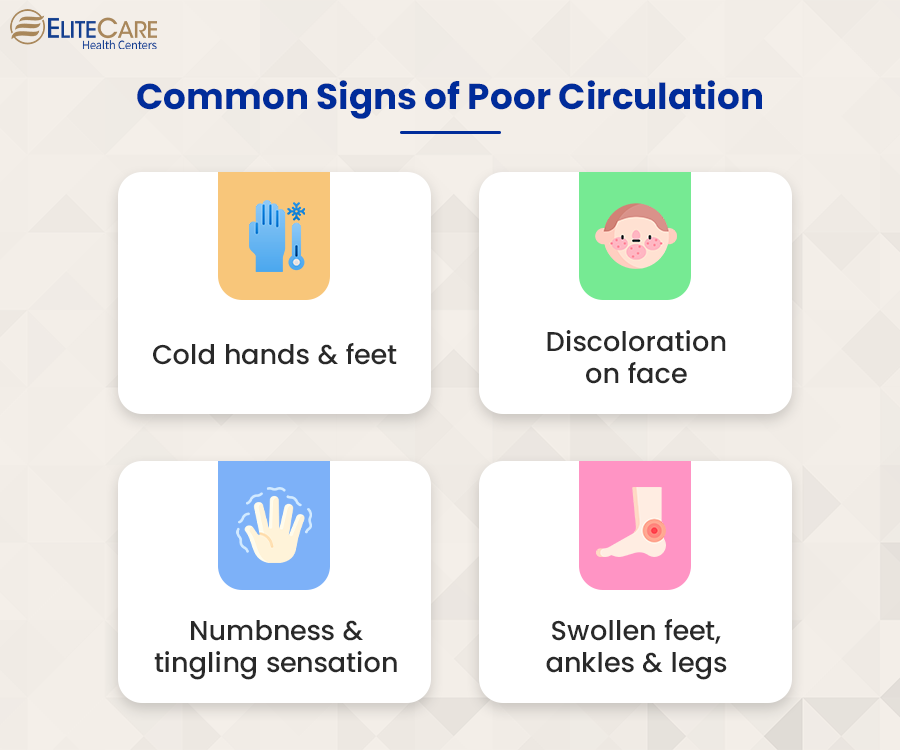
For elderly adults, poor circulation can be a result of age, or it can be a sign of other health concerns, such as obesity and diabetes. The common signs that can indicate issues with circulation are as follows:
- Cold hands and feet due to reduced blood flow to the extremities
- Discoloration on the nose, lips, and cheeks
- Numbness and tingling sensation in hands and feet
- Swelling in the body, especially the feet, ankles, and legs
If any of these signs are observed in seniors, there are a few steps they can take to improve circulation. Family members and caregivers may also check with their doctor for detailed guidance.
Read more: How Often Do I Need Blood Work?
How to Increase Blood Circulation
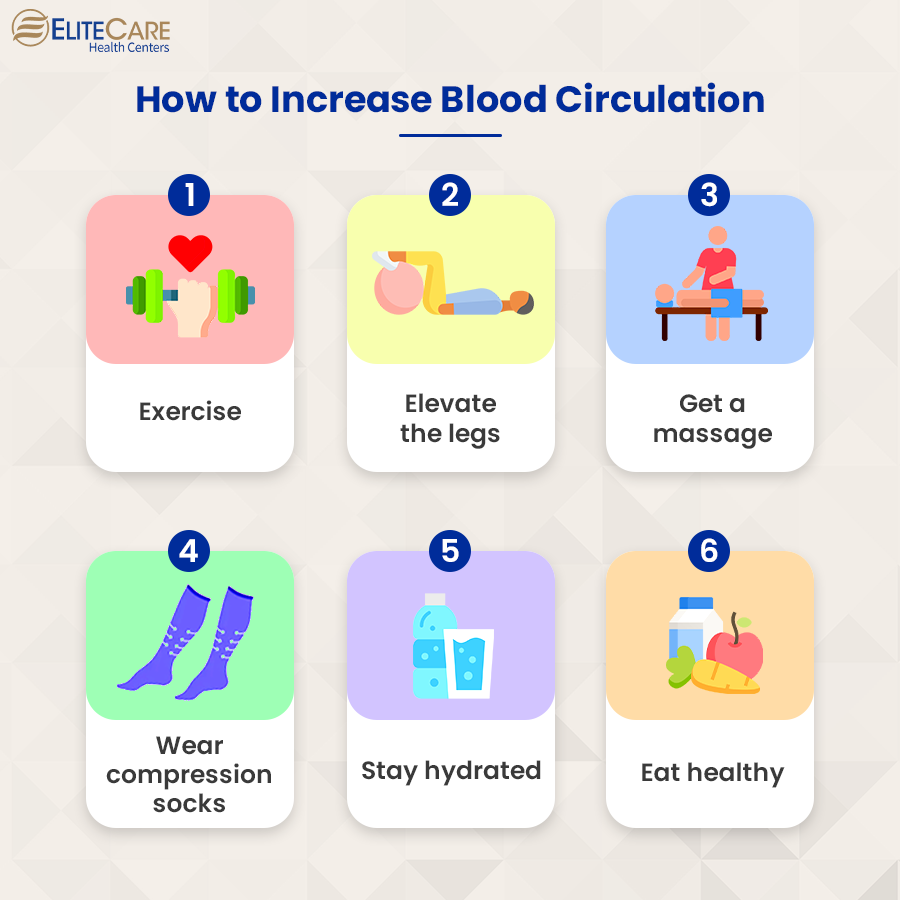
1. Exercise regularly
Exercise increases the heart rate, which in turn pumps more blood throughout the body. It helps to deliver oxygen and nutrients to all parts of the body while removing waste and toxins at the same time. Exercise also helps to improve the strength and flexibility of the blood vessels, which can be beneficial in reducing the risk of blockages and promoting better circulation.
Read More: Can seniors do strength training exercises?
Additionally, physical activity helps reduce stress and inflammation. Exercise can be as simple as a daily walk, but seniors must be consistent. Whatever type of exercise seniors choose, it is crucial they consider their existing medical conditions and follow required safety measures. Therefore, it is the best to take a doctor’s advice before starting.
2. Elevate the legs
When the legs are elevated, it can reduce the pressure and swelling in the lower extremities, allowing blood to flow more freely. This increased pressure helps move blood back to the heart more efficiently. In return, it helps to reduce the risk of developing conditions such as deep vein thrombosis.
Also, elevating the legs helps reduce the strain on the heart and it does not have to work as hard to pump blood.
Read More: Five exercises that can enable seniors to stay balanced
3. Get a massage and hydrotherapy
Massage helps reduce stress and tension, while hydrotherapy helps increase the flow of oxygen-rich blood to the affected areas. Massages are especially helpful as they improve blood circulation by loosening tight muscle fibers, increasing the range of motion and flexibility of muscles.
Additionally, these treatments can help increase the production of endorphins, which are known to positively affect blood circulation.
Read More: Top Relaxation Exercise You Can Use Today
4. Follow a healthy diet
Eating foods high in fiber and low in saturated fats can help keep the arteries clear and lower the risk of atherosclerosis. Foods rich in mega-3 fatty acids can also improve blood flow and reduce inflammation. In addition, seniors should consume foods rich in antioxidants as they can effectively reduce oxidative stress in the body.
Besides, they should reduce sodium intake by cutting down processed and salty foods that cause BP spikes which in return affect blood circulation.
Read More: 7 Essential Foods to Keep Seniors Healthy in Winter
5. Wear compression socks
Compression socks aid in better circulation by applying pressure to the legs and feet. The pressure applied by the socks allows the veins and arteries to move blood more efficiently through the body, increasing the rate of blood flow and helping to decrease blood pooling in the lower extremities. It also helps reduce swelling, relieve pain, and prevent cramps and other symptoms associated with poor circulation.
Compression socks are extremely useful in reducing the risk of developing varicose veins and deep vein thrombosis, which are common among seniors.
6. Stay hydrated
As people age, their bodies become less efficient at regulating fluids and electrolytes, resulting in an increased risk of dehydration. When the body is dehydrated, it increases the thickness of the blood, making it harder to pump and circulate through the body. This can lead to health issues such as fatigue, lightheadedness, dizziness, and even more serious cardiac complications.
Adequate hydration helps improve blood circulation by increasing the volume of blood plasma, which is the fluid portion of the blood. When there is more fluid in the bloodstream, it helps to reduce the density of the blood, making it easier for the blood to move through the vessels.
Read More: 7 Drinks to Keep the Elderly Hydrated
Summing Up
In conclusion, improving blood circulation in seniors is an invaluable part of keeping them healthy and active as they age. The key to maintaining healthy blood circulation is to check for the above-mentioned signs and monitor them regularly. By following the six recommendations outlined in this blog, seniors can help ensure their bodies are getting the proper circulation they need to stay fit as they age. For any queries or concerns regarding poor circulation in seniors, contact EliteCare Health Centers, one of the best medical clinics in Florida and schedule an appointment with our primary care specialists.
